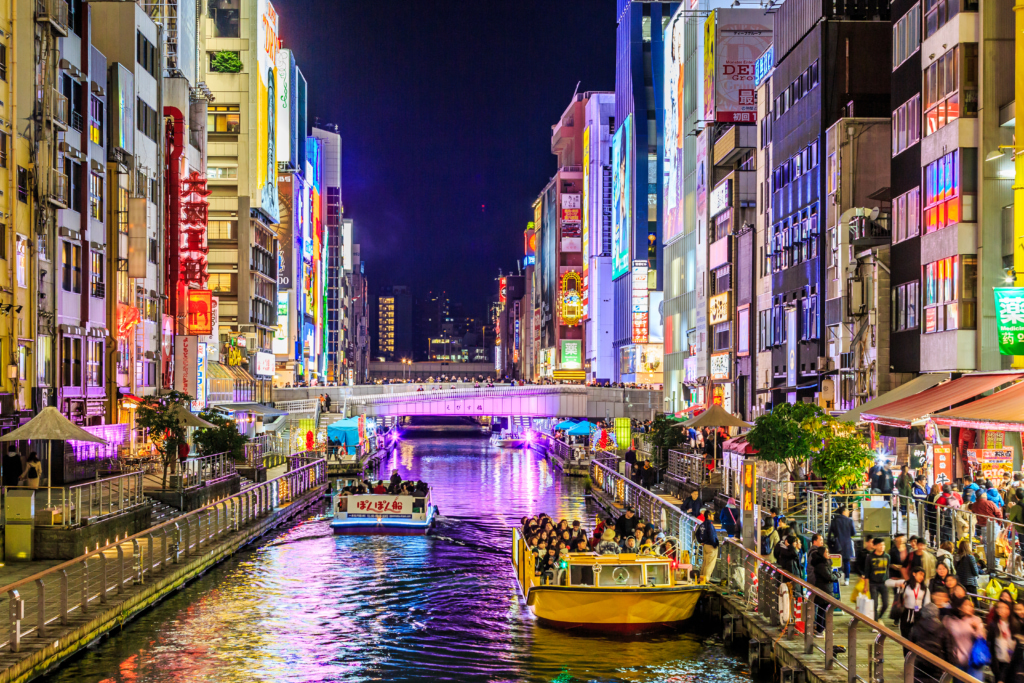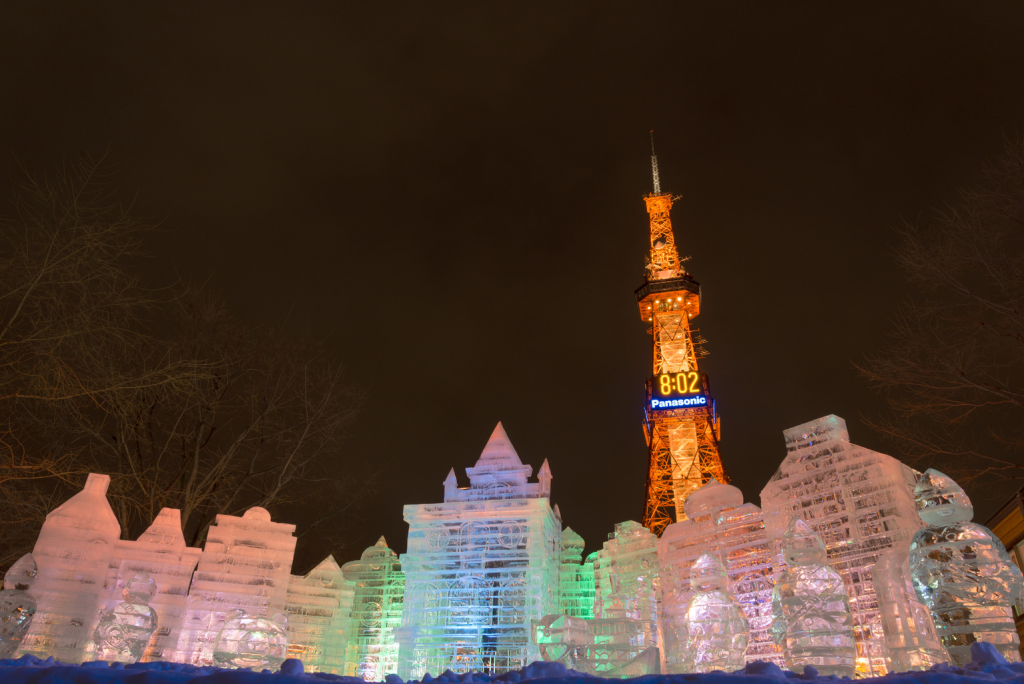
Sapporo | Photo by stock_shot via Shutterstock
1. Sapporo
The capital of Japan’s northernmost prefecture, Sapporo is a metropolis in the midst of nature. With snowy weather in winter and cool summers, it’s a great place to visit throughout the year. Sapporo hosted the Winter Olympics in 1972, so you can find high-class snow slopes. One of the biggest festivals of the year, the Sapporo Snow Festival shouldn’t be missed either. Sapporo is a great place for a night out with good beer and fresh seafood.
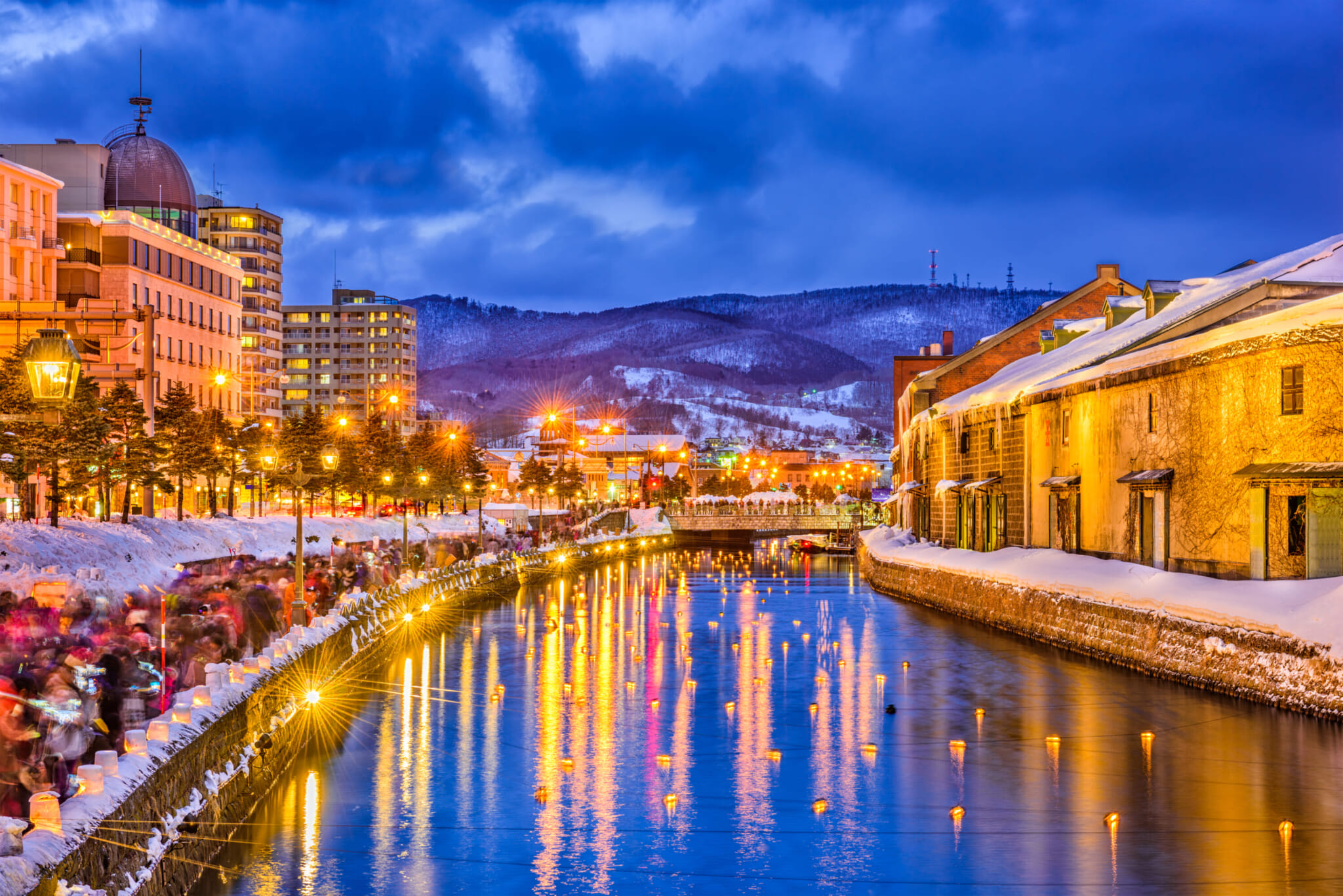
Image by Sean Pavone via Shutterstock
2. Otaru
Around 30 minutes away from Sapporo, Otaru is a small, historical, canal city nicknamed the “Venice of Japan.” When Hokkaido was colonized in the late 1800s, Otaru was a big trading and fishing port. It subsequently became the terminal for Hokkaido’s first railway between Otaru and Sapporo. Otaru is a lovely spot for a nice stroll and coffee.
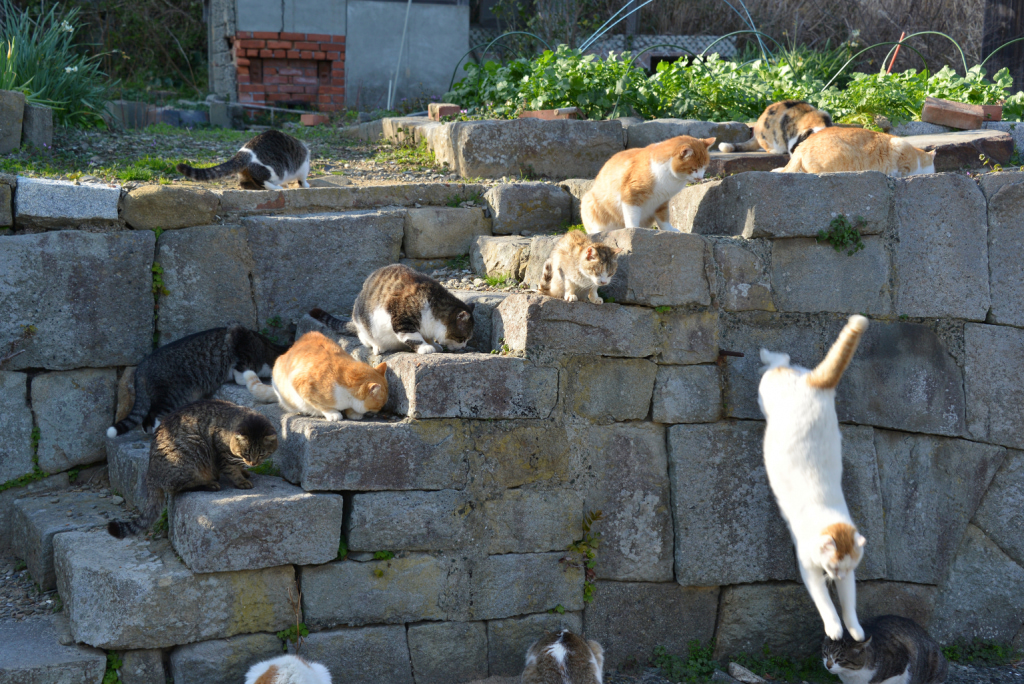
Tashirojima Island | Photo by sido kagawa via Shutterstock
3. Sendai
Full of samurai history, Sendai is a city surrounded by both the sea and mountains. It was founded by feudal lord Date Masamune. Nicknamed the “City of Trees,” Sendai is a green metropolis with lots of activities to do throughout the four seasons. This includes cycling, SUP, walking around the Rinnoji Temple and enjoying the autumn foliage. Two hours northeast of Sendai is the famed Tashirojima Island, also known as Cat Island, which is inhabited by more than 100 cats.
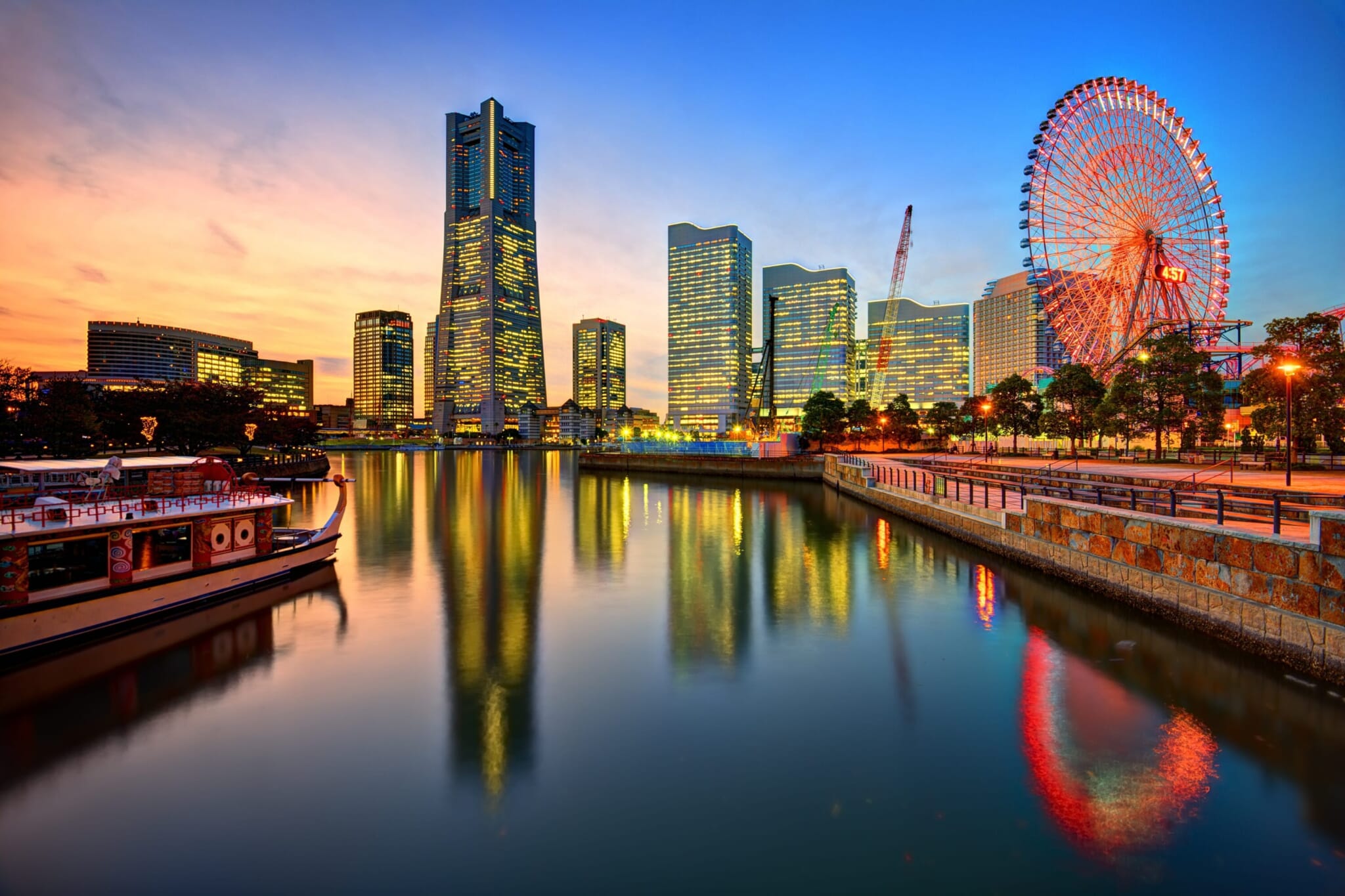
Yokohama Minatomirai by ESB Professional via Shutterstock
4. Yokohama
One of Japan’s major port cities that was opened to the world in 1859, Yokohama is a diverse place bustling with different cultures. It boasts one of the world’s most famous Chinatowns, featuring old architecture and fancy hotels. Snack your way through various Chinese cuisines and have your palms read and your fortune told by fortune tellers. Check out the preserved Western architecture with local fashion boutiques and Japanese gardens in the Yamate district. The most popular spot, though, is the futuristic waterfront Minatomirai. The Cup Noodles Museum and Shin Yokohama Ramen Museum are also worth visiting.
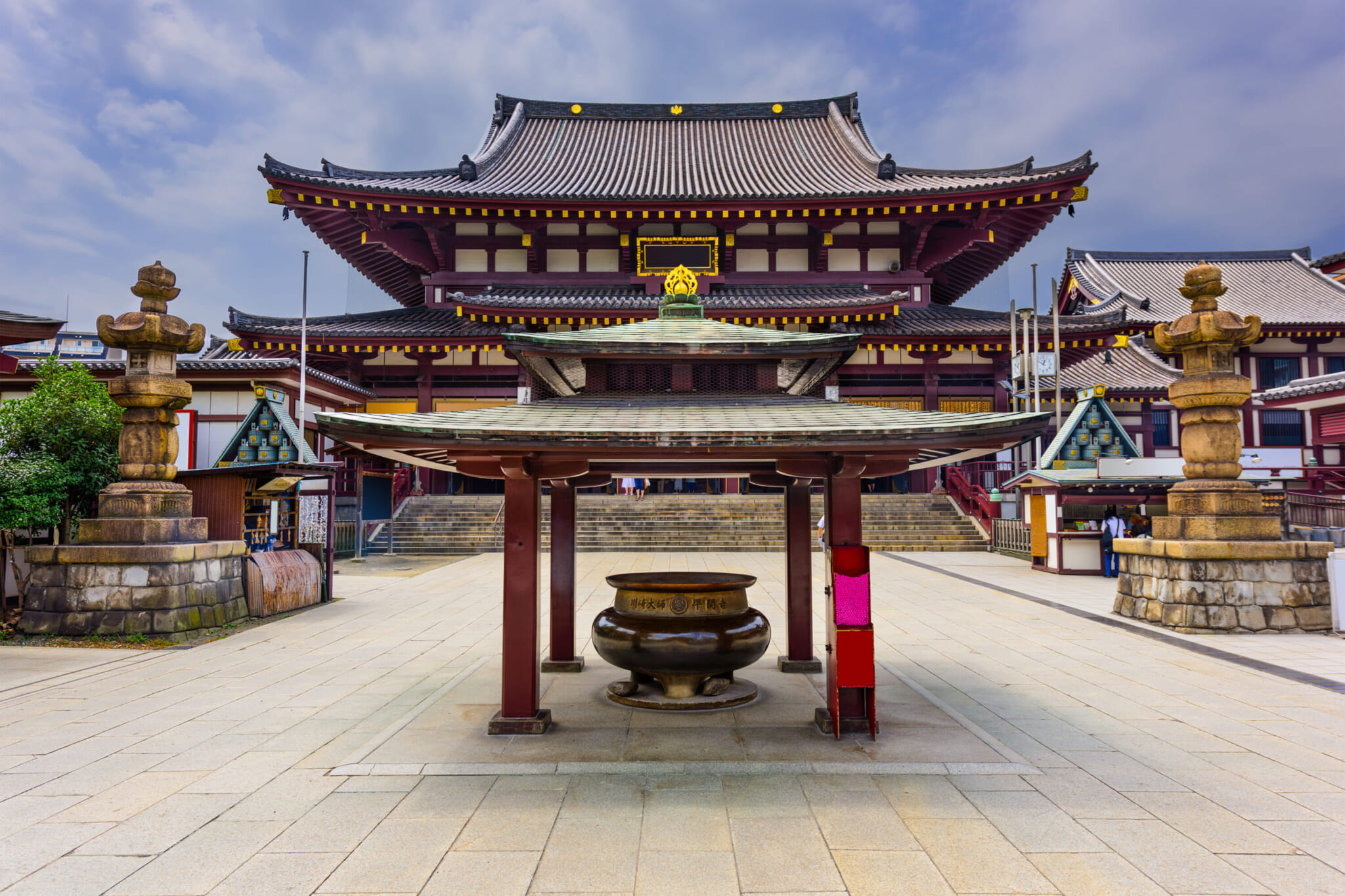
Kawasaki Daishi Shrine by Sean Pavone via Shutterstock
5. Kawasaki
Conveniently located between Tokyo and Yokohama, Kawasaki features museums dedicated to artists Taro Okamoto and Fujiko F Fujio, the creator of Doraemon. Other popular sites include Kawasaki Daishi Heikenji Temple, the headquarters of the Chisan sect of Shingon Buddhism, and the Nihon Minkaen, also known as the Japan Open-air Folk Museum, which holds various exhibitions and traditional indigo dying workshops. Throughout the spring and autumn time, take a stroll in the rose garden Ikuta Greenspace, where you can gaze at a rainbow of different colored roses. Volunteer citizens tend the flowers and the managing facilities.
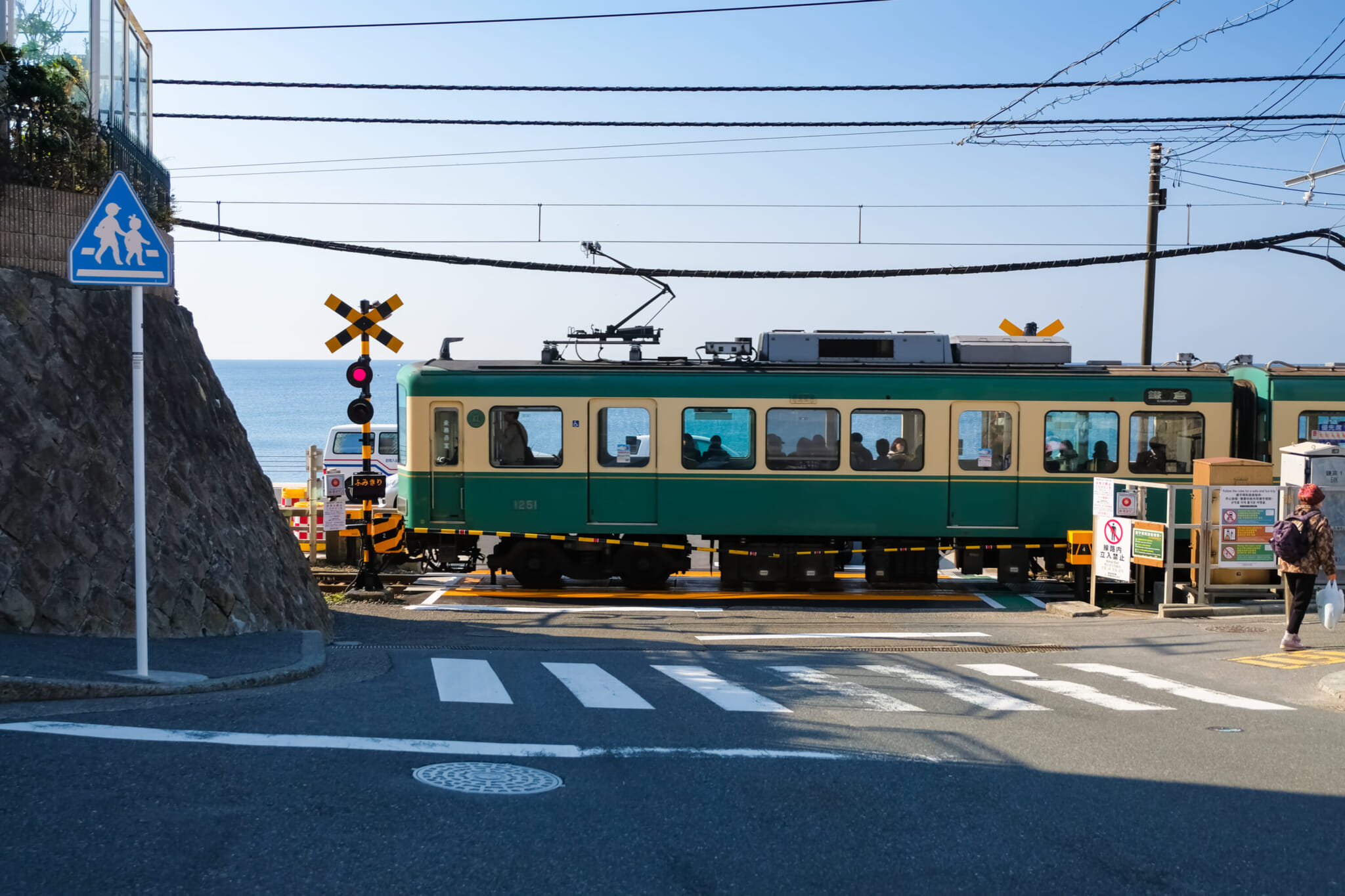
Kamakura by Gengorou via Shutterstock
6. Kamakura
Once the capital during the Kamakura Shogunate era, Kamakura is a cultural coastal city in Kanagawa Prefecture. This ancient city is surrounded by three mountains and the ocean and is considered a popular summer spot to escape from the Tokyo heat. Kamakura is dotted with various spiritual sites, such as the Great Buddha of Kamakura, Hasedera Temple, Tsurugaoka Hachimangu Shrine and Meigetsuin, known for its gorgeous hydrangea which bloom during rainy season. Foodies should grab a rice bowl of fresh shirasu, or small, young, white sardines, a local specialty. Another good option in the summer is to enjoy a local beer at an umi-no-ie, drinking and eating establishments located on the city’s beaches.
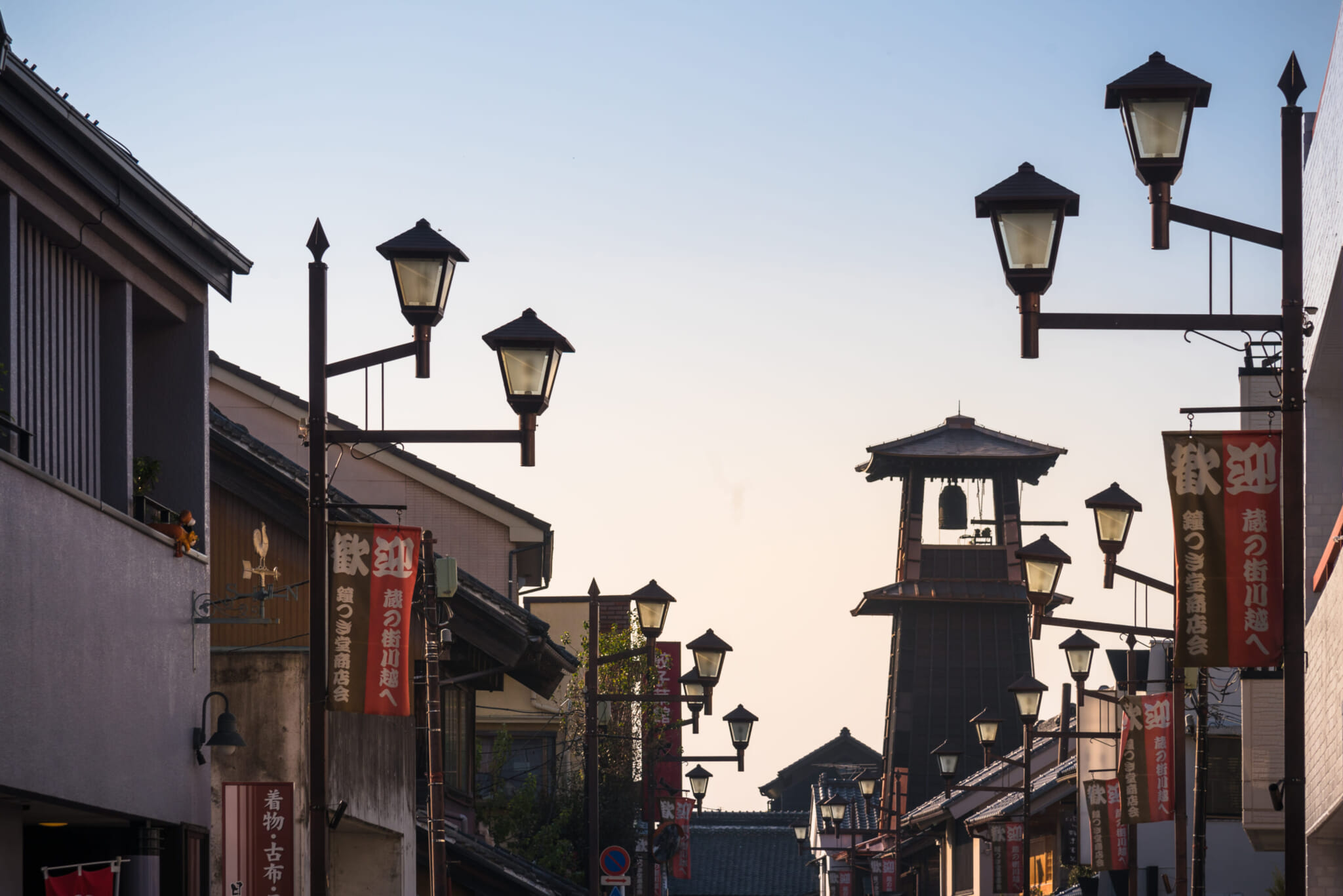
Kawagoe by Kanisorn Pringthongfoo via Shutterstock
7. Kawagoe
Nicknamed “Little Edo”, Kawagoe is only 30 minutes away from central Tokyo. Its main shopping street, Ichibangai, is lined up with clay-walled warehouse-styled buildings, displaying its history as a supplier of commodities to Tokyo, then known as Edo. Check out Kawagoe’s historical remnants, such as the Toki no Kane (wooden bell tower), Kawagoe Hikawa Shrine, Kitain Temple, Kawagoe Castle Honmaru Palace and much more. Visitors should try unagi, or broiled eel, a classic delicacy in Kawagoe. Take a stroll to the Kawagoe Hikawa Shrine where you can purchase a special tai omikuji, that is a wooden carved red snapper fortune.
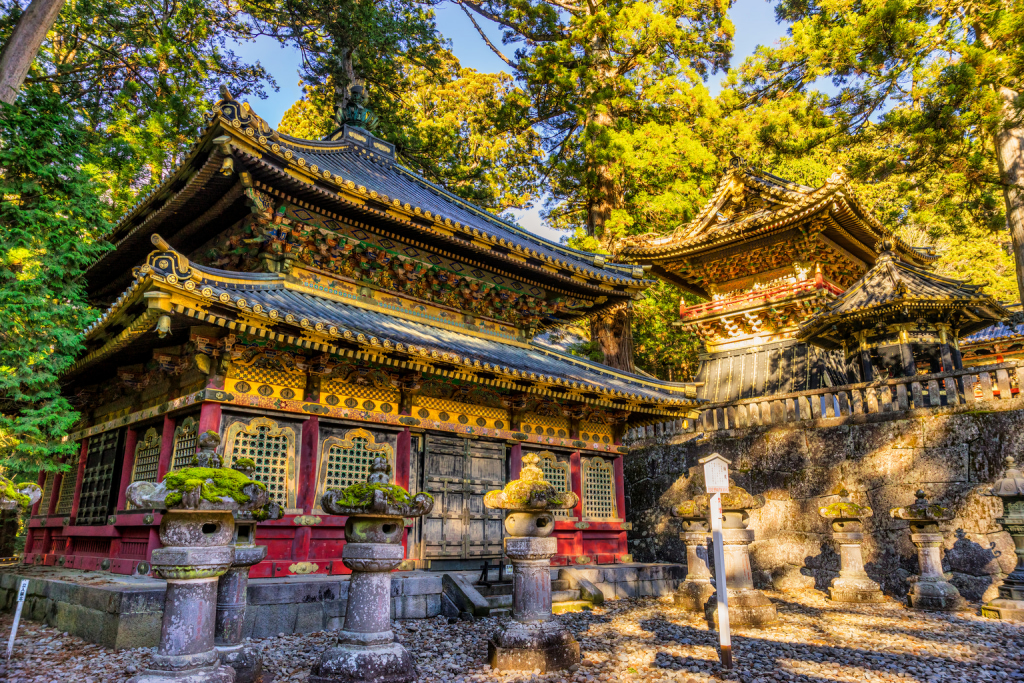
Toshogu in Nikko | Photo by Luciano Mortula – LGM via Shutterstock
8. Nikko
Toshogu, a luxuriously decorated shrine and mausoleum for Ieyasu Tokugawa, is one of the gems of Nikko. Even before that, this area well known for being the core of Shinto and Buddhist Mountain worship for many centuries. Nikko National Park offers gorgeous mountainscapes, lakes, waterfalls, wild monkeys, hot springs and great hiking trails. Lake Chuzenji is a beautiful place to see autumn foliage. The colors start blossoming from the peaks of Yumoto Onsen and start descending in early October. The autumn leaves bloom in color around Lake Chuzenji in late October.
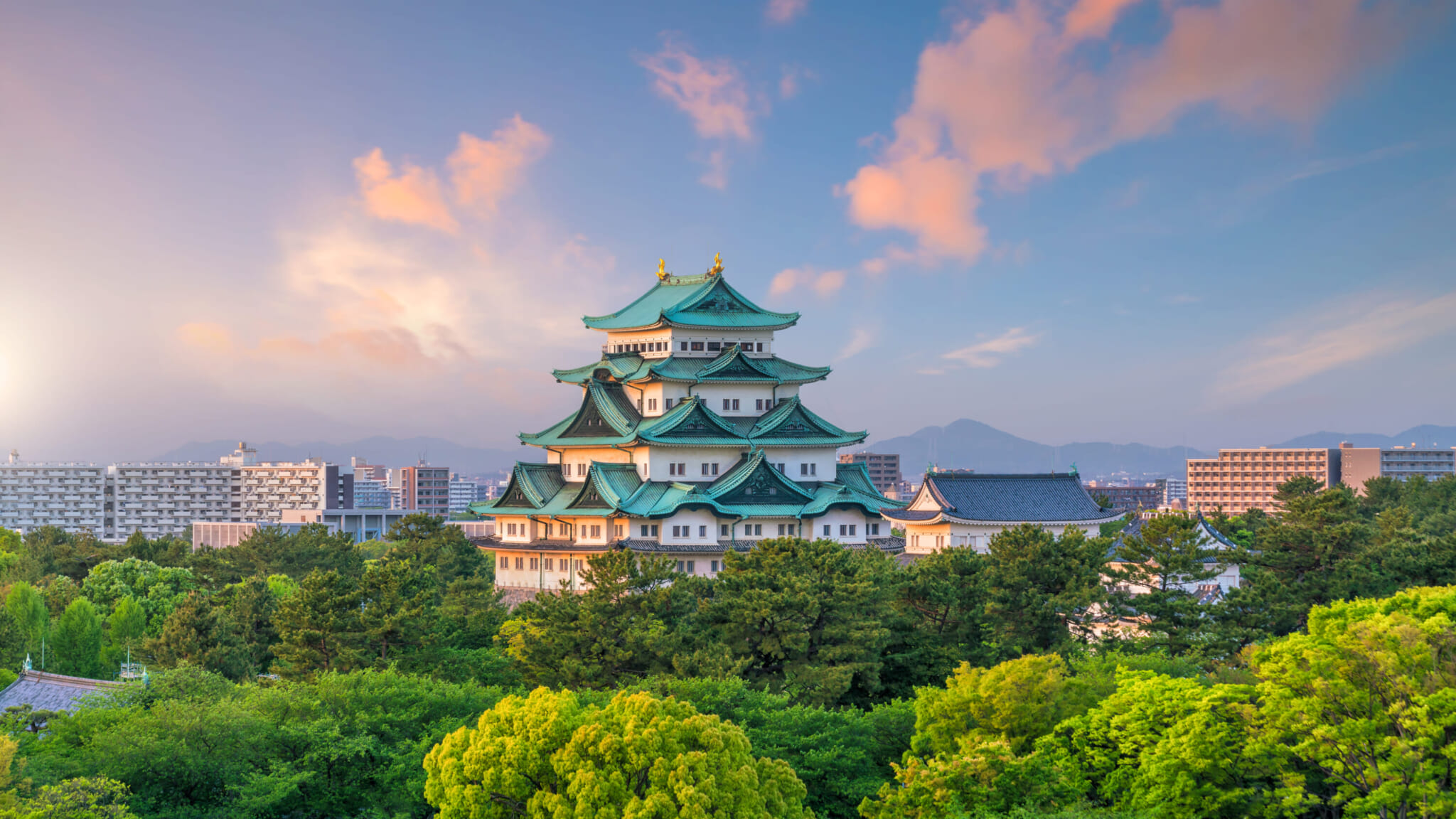
Nagoya Castle by f11photo via Shutterstock
9. Nagoya
The fourth largest city in Japan, Nagoya is the capital of Aichi Prefecture and one of Honshu’s main industrial centers. It is home to Toyota’s main manufacturing factory and also boasts the Toyota Kaikan Museum where car nerds can geek out. In the summer, Nagoya hosts the World Cosplay Summit where anime, games, manga and pop culture explode. World famous cosplayers fly to Nagoya for an annual cosplay contest. The first castle in Japan to be named a National Treasure, Nagoya Castle is one of the largest in the country. Check out the world’s biggest planetarium in Nagoya City Science Museum, which is full of lots of fun and interactive exhibitions. The adventurous foodies can try a wide array of Nagoya dishes from misokatsu, hitsumabushi and so much more.
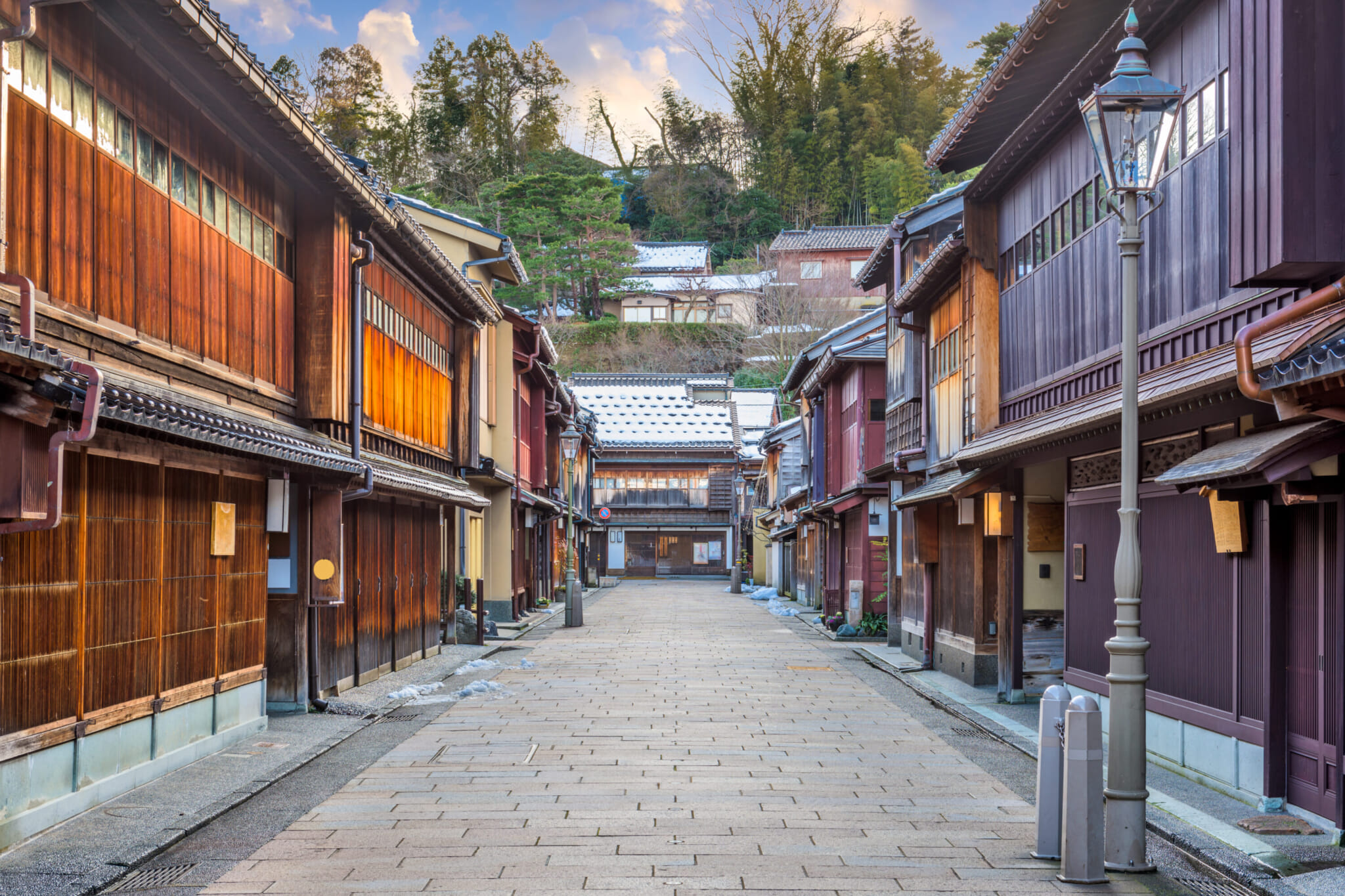
Kanazawa by Sean Pavone via Shutterstock
10. Kanazawa
Easily accessible from Osaka and Kyoto, Kanazawa is one of Japan’s most underrated urban metropolises. This city is full of arts and crafts, culture, nature, history and great food, especially seafood. Kanazawa specializes in gold leaf and ceramics, sushi and sake, modern art, architecture and Zen Buddhism. Visitors can find fine crafted memorabilia to take home from their travels. Check out the Kenrokuen Garden, one of Japan’s top three gardens for gorgeous blossoms, small creeks, Japanese traditional tea houses and cottages. Take a stroll along Kanazawa’s preserved historic streets, including Higashi Chaya District, Nagamachi Samurai District and more.
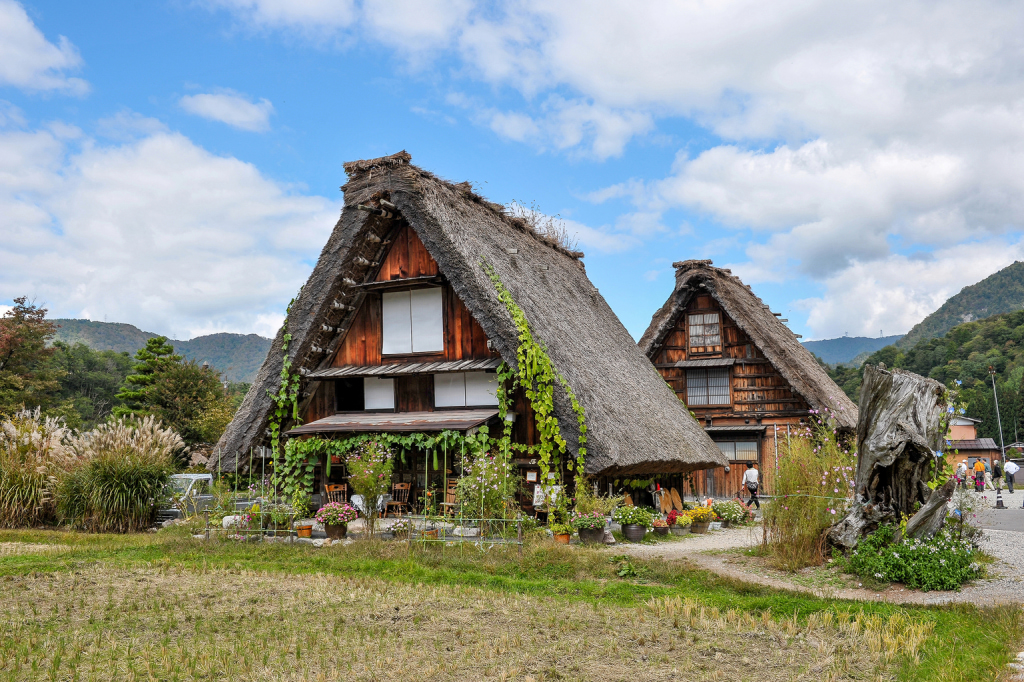
Takayama | Photo by Vachira Sat via Shutterstock
11. Takayama
Famously known for its beautifully preserved Edo Period streets, Takayama is a charming city, bustling with tradition. During the Edo Period, it was home to many artisans, merchants, carpenters and timber craftsmen, especially in Sannomachi. Local food specialties include Takayama ramen and Hida-beef. For the early birds, check out the two morning markets, one near the Miyagawa River and another in front of Takayama Jinya, where local fresh produce, jams, sweets and crafts are sold. Takayama also hosts one of Japan’s most beautiful festivals called the Takayama Festival.
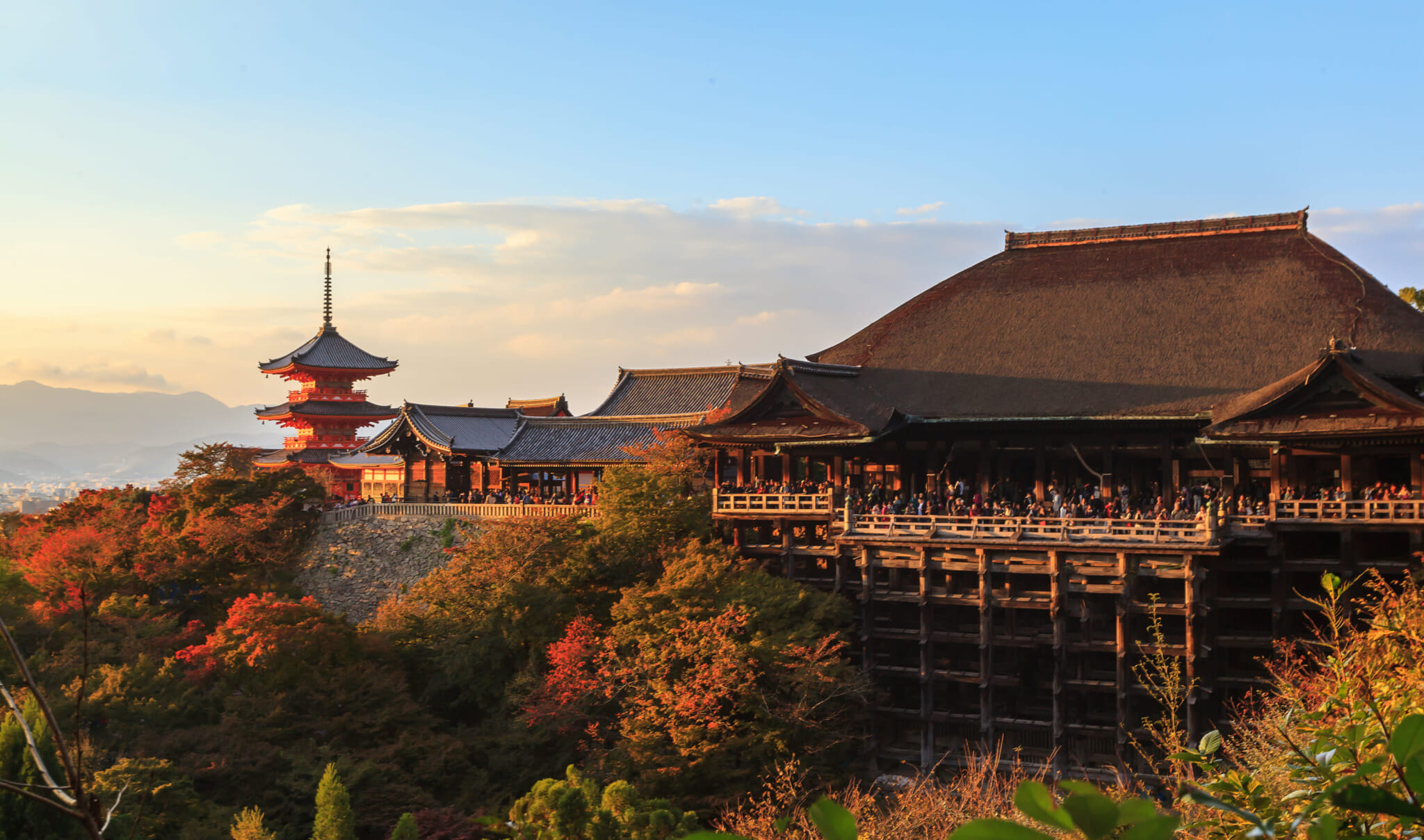
Kyomizu-dera temple by akarapong via Shutterstock
12. Kyoto
The former capital of Japan, Kyoto has much to offer in its long, deep-rooted history and traditions. Surrounded by temples, shrines and bamboo forests, there is truly an air of tranquility in the city. Kyoto is only a relatively short Shinkansen ride from Tokyo, making it a perfect weekend getaway trip from the hustle and bustle of the capital. From historic buildings, Japanese sweets, pop culture, traditional arts and crafts, there is so much to do for both first time travellers and frequent travellers, it truly does not get old.
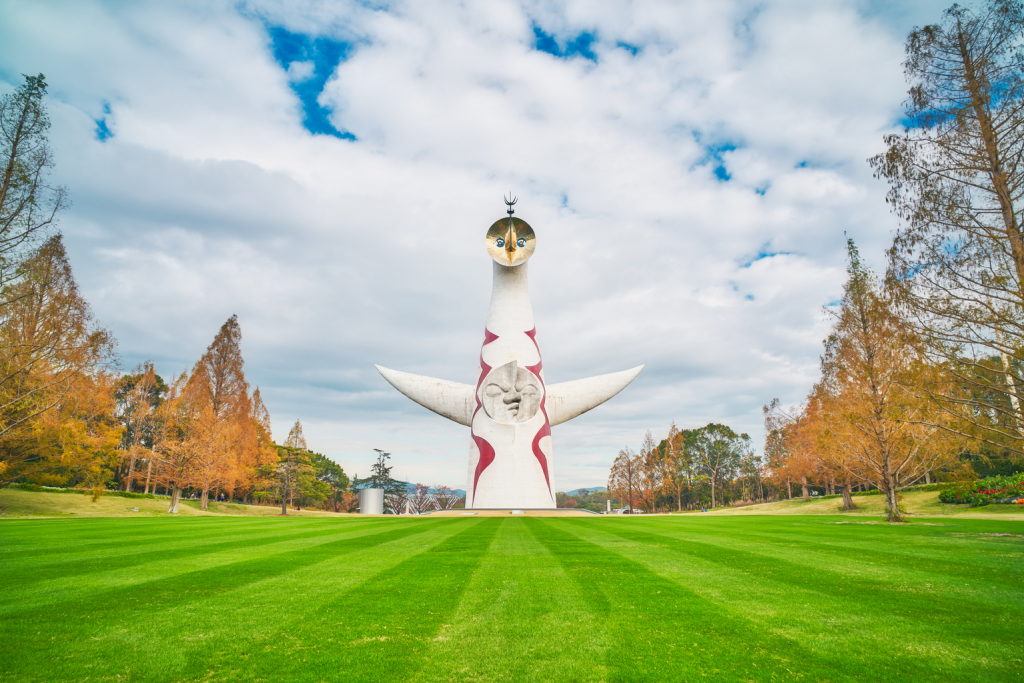
Photo by YUSHENG HSU via Shutterstock
13. Osaka
The second largest city in Japan after Tokyo, Osaka is more relaxed than the capital. Visitors who enjoy a night out can expect a friendly encounter with the locals, plus should try dishes such as okonomiyaki and takoyaki. Get your shop on at Shinsaibashi, a shopping street with a history of more than 300 years. There is also history to this metropolis, with the Osaka Castle and the Tower of the Sun, the symbol of Expo ‘70, to discover. Don’t forget the fun spots like Universal Studios Japan where you can meet your favorite wizard or win a round of Mario Kart.
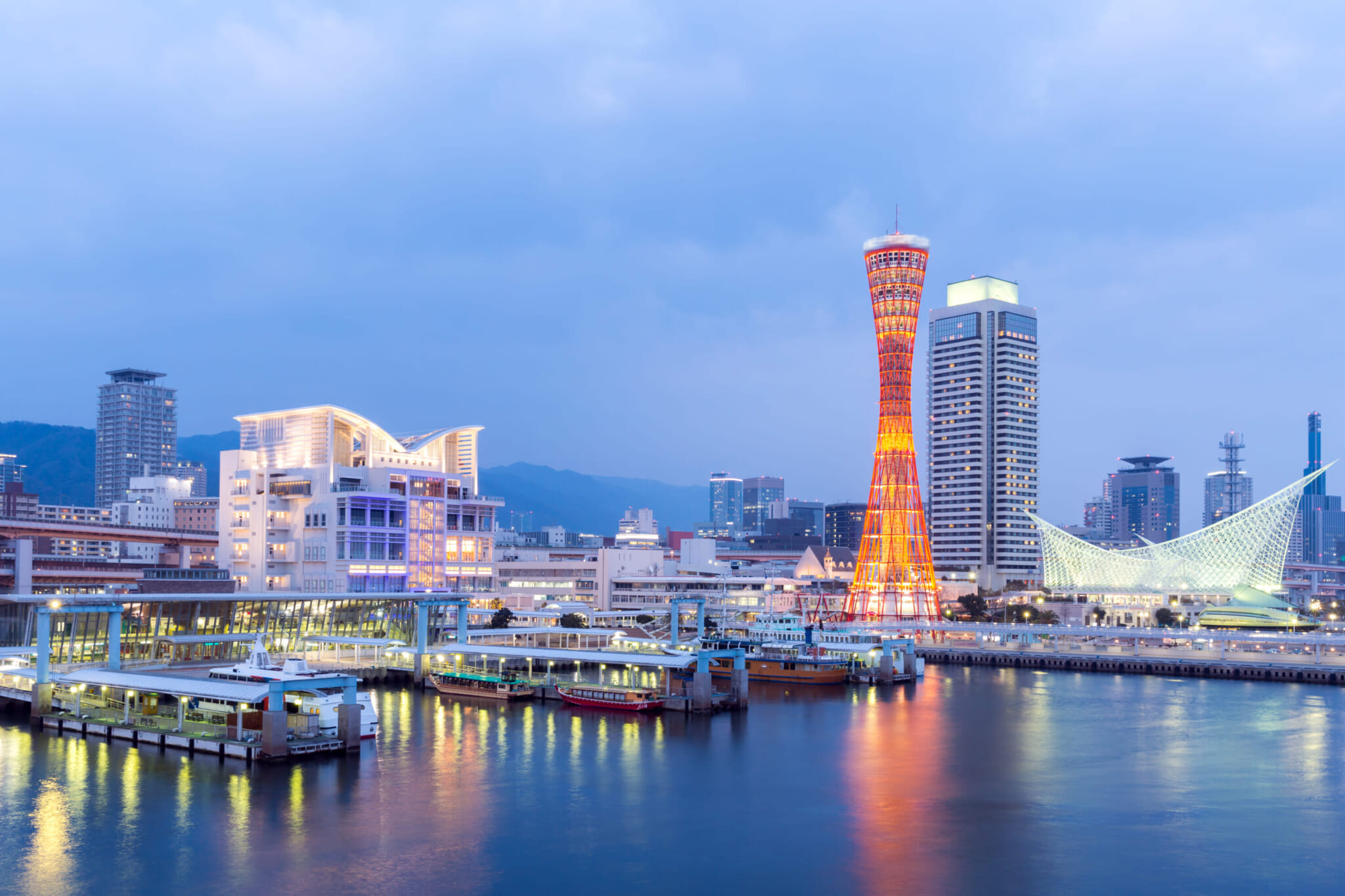
Port of Kobe by vichie81 via Shutterstock
14. Kobe
The capital of the Hyogo Prefecture and famously known for its beef, there is more to Kobe than meets the eye. This port city was one of the first port cities to open to foreign trade in the 19th century. Check out the Rokko Mountain and the modern art exhibition at the top of the mountain. After the hike, wind down and relax in the Arima Onsen. Explore along the port bay where the famed Kobe Port Tower is located. Have a taste of the city’s famed cuisine, Kobe beef for dinner.
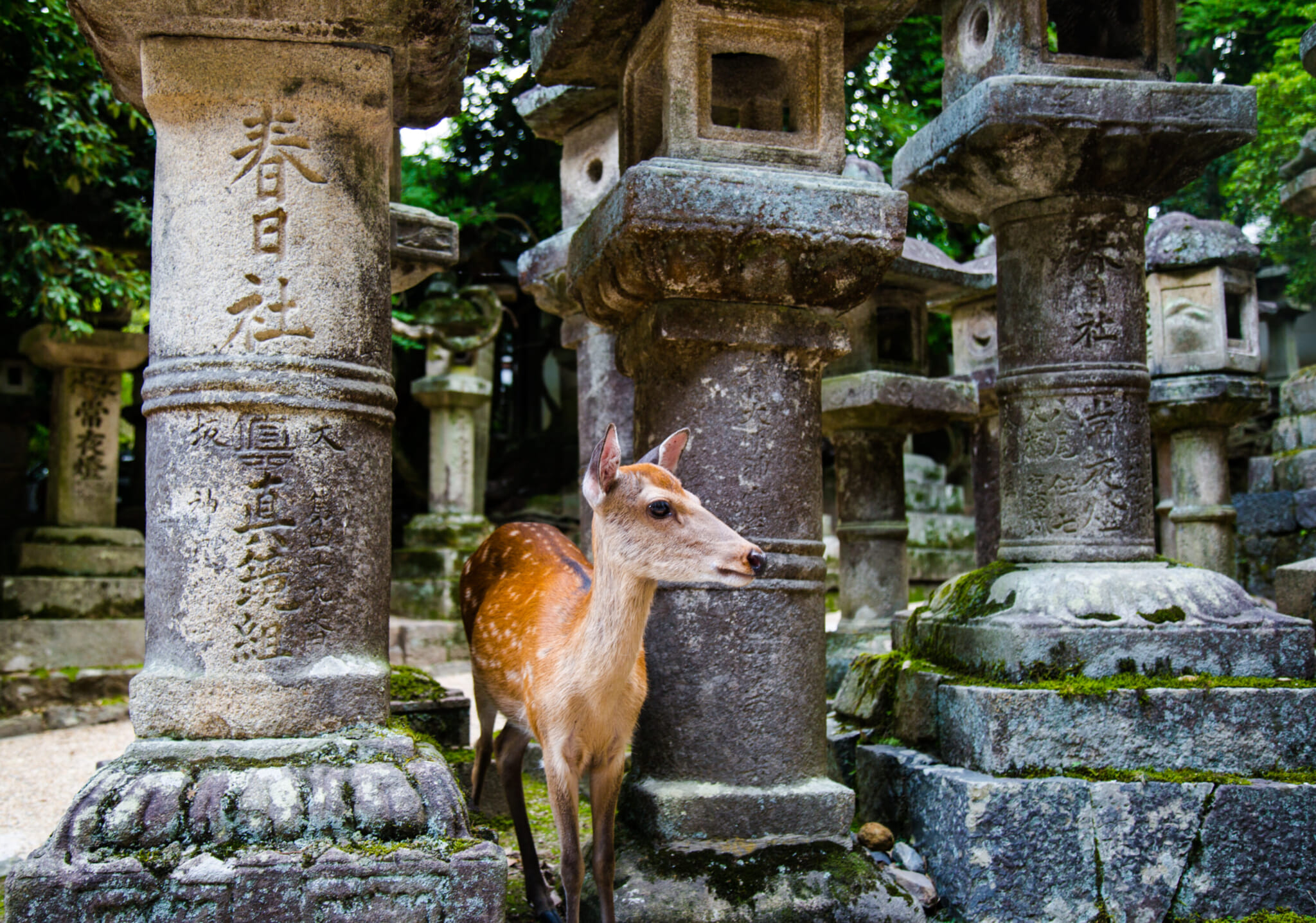
Kasuga Grand Shrine by Arif Alakbar via Shutterstock
15. Nara
A city crawling with wild deer which bow to visitors who bow to them, Nara was Japan’s first permanent capital in 710. The capital moved to Nagaoka in 784 due to the increasing Buddhist influence in the city. Temples and shrines worth visiting are the Todaiji Temple, Horyuji Temple, Kasuga Taisha and so much more. For nature lovers, Isuien Garden is another park to check out other than the famed Nara park with wild deer.
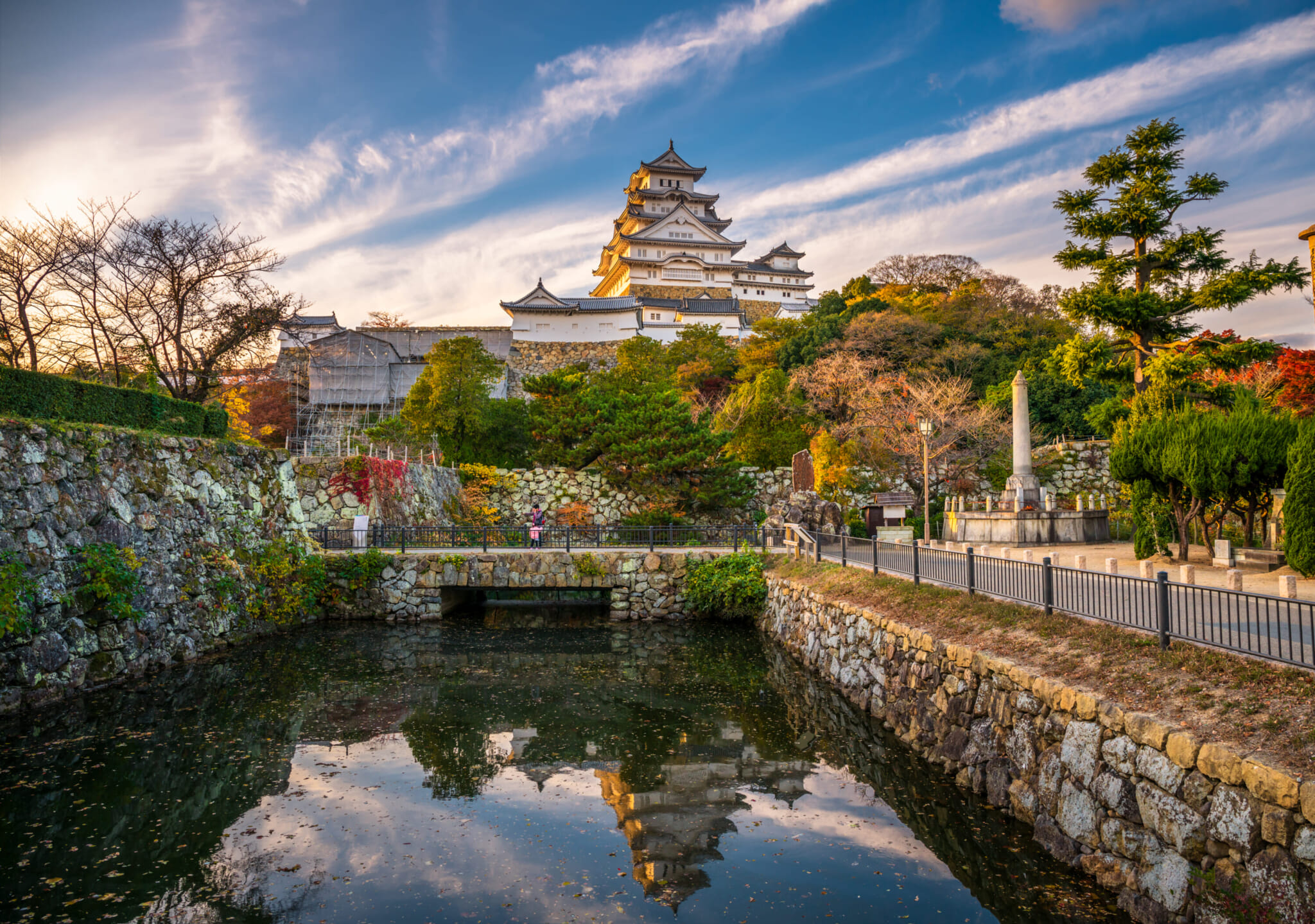
Himeji Castle by Pajor Pawel via Shutterstock
16. Himeji
The second largest city in Hyogo after Kobe, Himeji is most well known for its samurai history. One famed national treasure of Himeji is the beautifully preserved Himeji Castle. It is a national treasure and a UNESCO heritage site. While visiting the castle, check out the Kokoen Zen Garden located beside Himeji Castle. Himeji is home to various temples and shrines, including Shoshazan Engyoji Temple, famed for its appearance in The Last Samurai film. Sake lovers should sample the local sake tasting workshop at Kokoromi Standing Bar, as 95 percent of the sake is made in Hyogo.
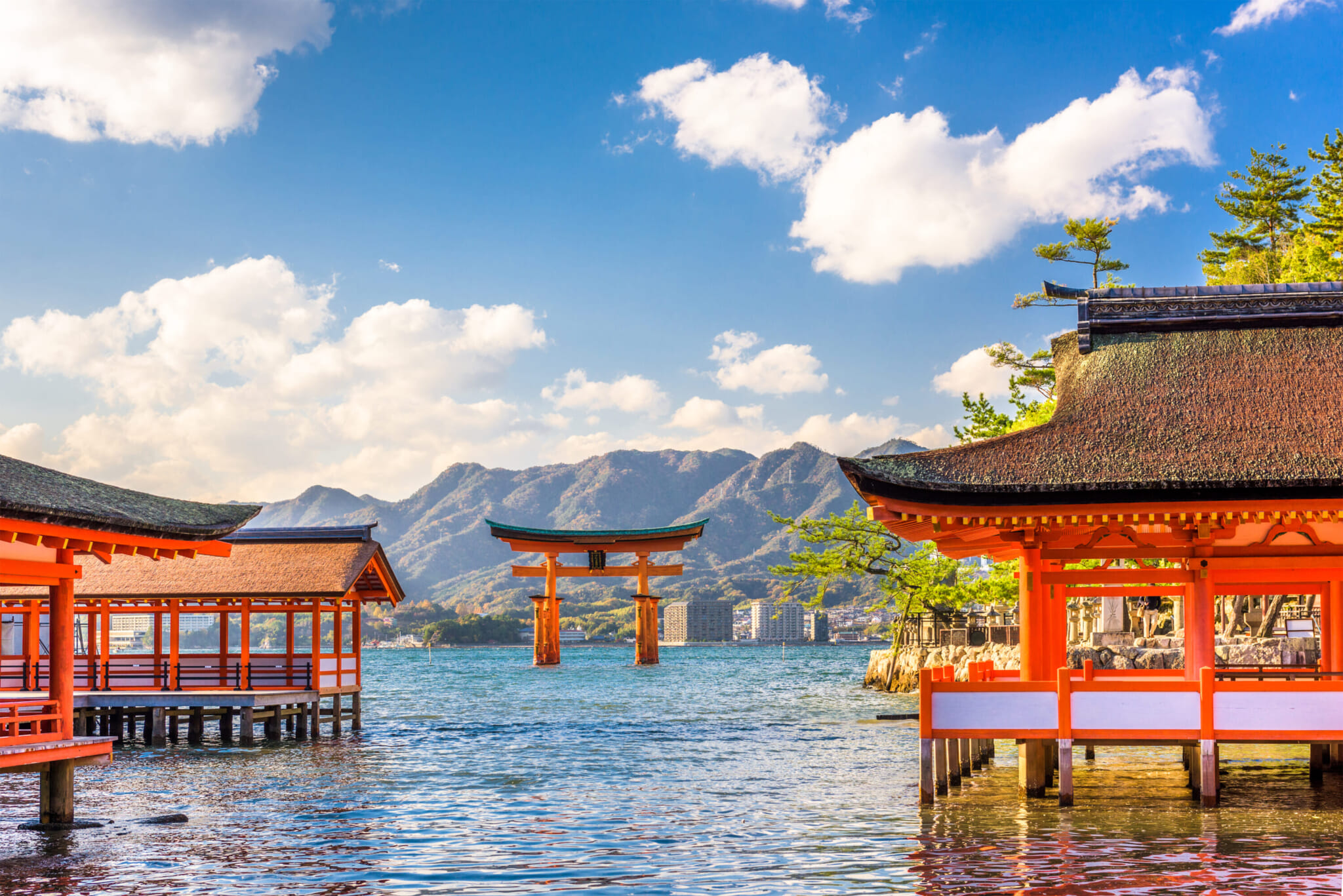
Miyajima Shrine | Photo by Sean Pavone via Shutterstock
17. Hiroshima
A city that was once devastated during World War II, Hiroshima is now known as a city of peace. Alongside its historic sites, including the Hiroshima Peace Memorial Park and Museum, Hiroshima has a lot to offer, such as the Hiroshima Castle, Miyajima Island, Mitaki Temple, Itsukushima Shrine and more. Food lovers should try the Hiroshima-style okonomiyaki and visit the Wood Egg Okonomiyaki Museum.
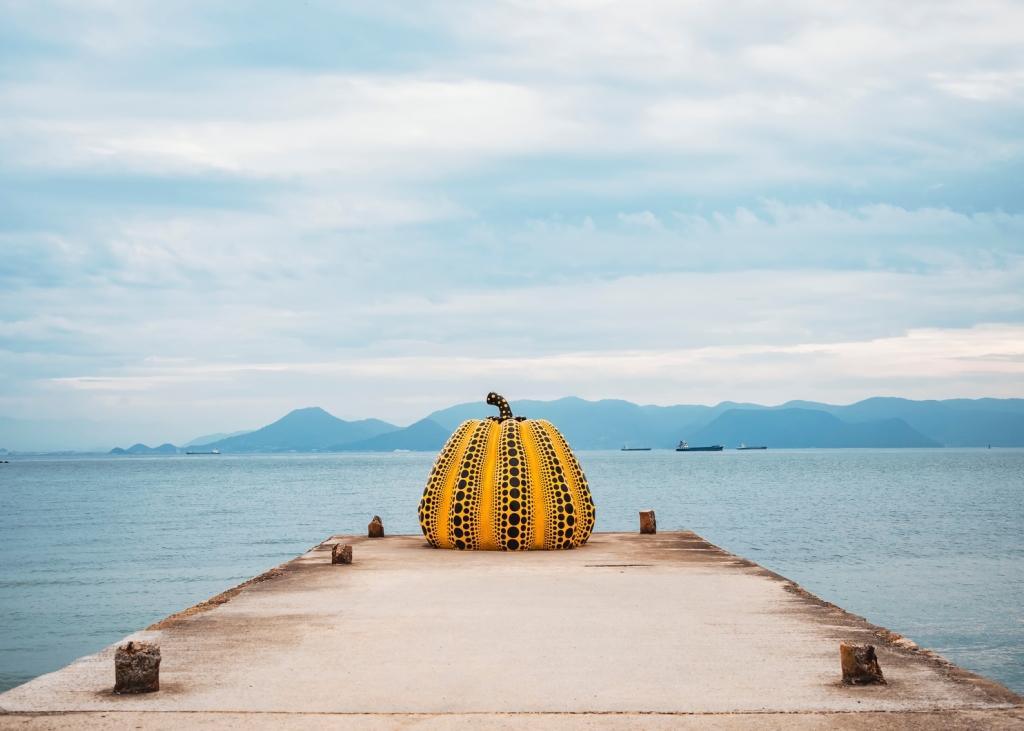
Naoshima Island | Photo by VTT Studio via Shutterstock
18. Okayama
Castles, trains, gardens and fairy tales, Okayama is the city of all of these things. It’s where the famous Japanese fairy tale “Momotaro” (“Peach Boy”) took place. Most tourists visit Okayama Castle and Korakuen Garden. Head to Naoshima, the island of art, to check out the famed pumpkin sculpture by Yayoi Kusama and other modern art pieces for a short trip from Okayama. Check out the fun Manekineko or Lucky Cat Museum where more than 700 lucky cats were collected from all over Japan. There’s also Kurashiki Bikan Historical Quarter, a merchant town where the canals were used to transport goods.
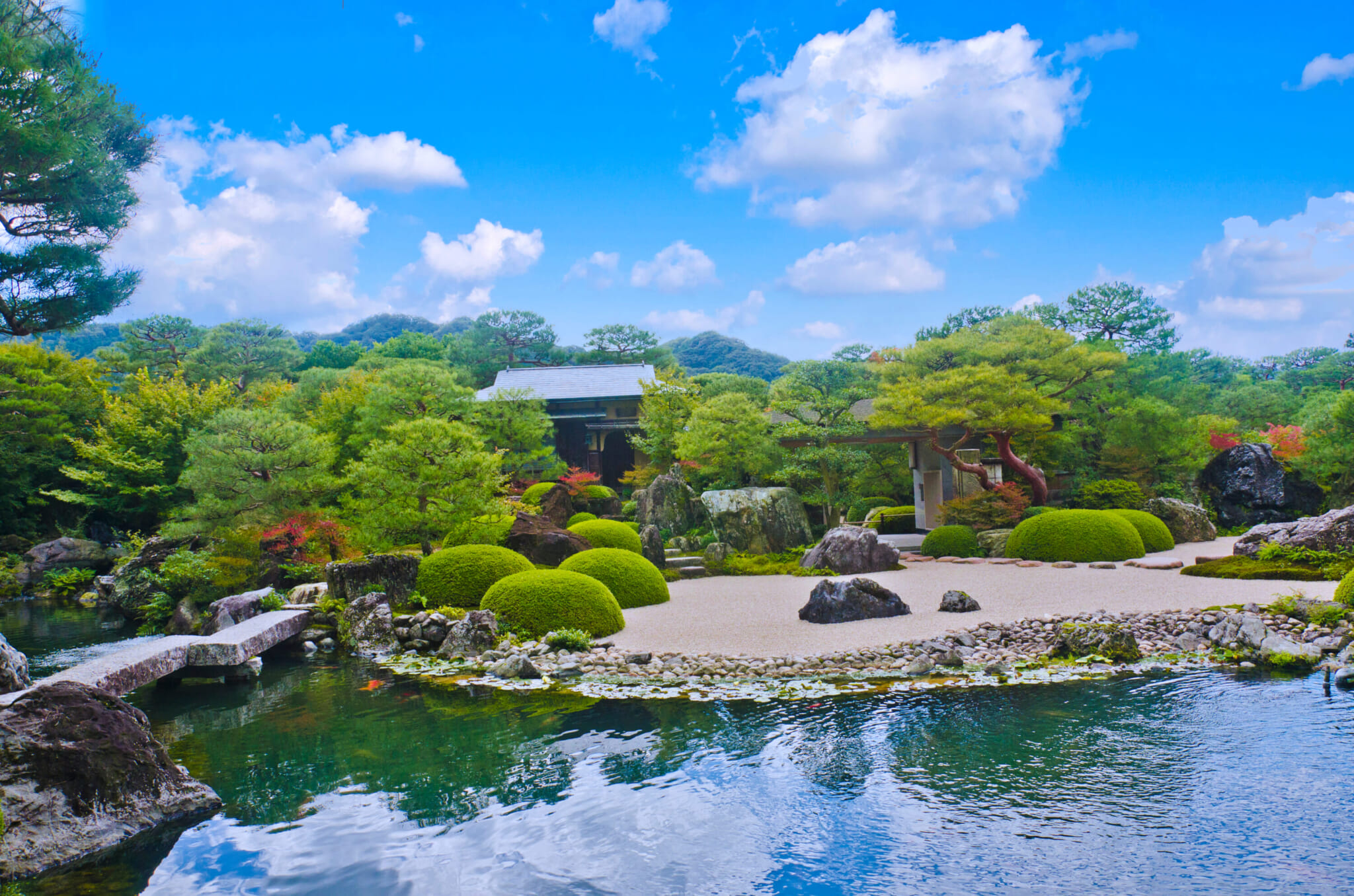
Adachi Garden | Photo by Tanya Jones via Shutterstock
19. Matsue
Matsue in Shimane Prefecture is nicknamed the “city of water” because of its location between Lake Shinji, Nakaumi Lagoon and the Sea of Japan. Check out the Matsue Castle, one of the last surviving original castles. Near Matsue is Izumo Taisha, one of the most ancient and important Shinto shrines in Japan, and the Adachi Museum of Art. Matsue hosts the beautiful drum parade called Do Gyoretsu and Horanenya, a traditional Japanese boat festival. The city has beautifully preserved Edo Period samurai streets.
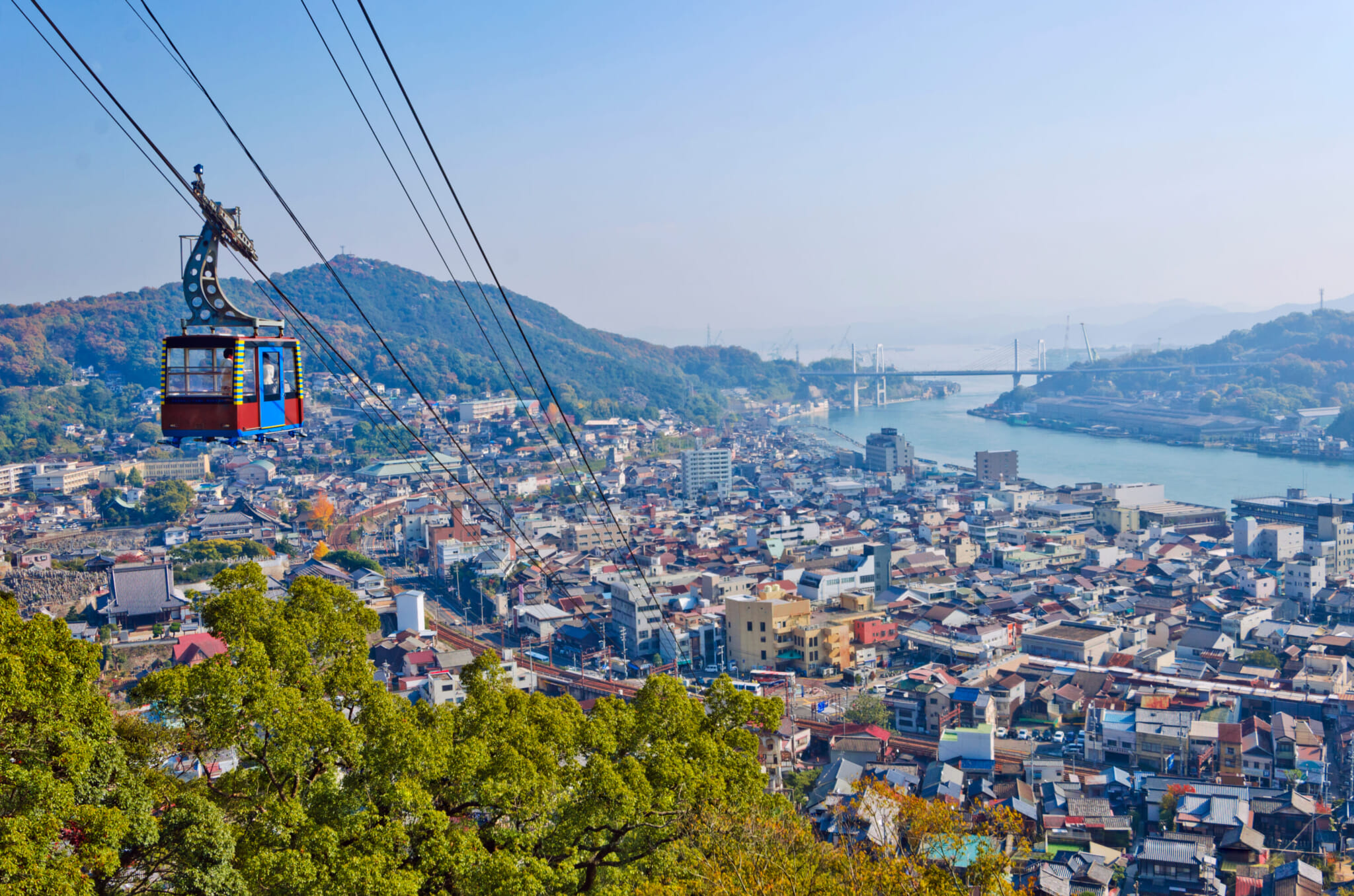
Onomichi | Photo by Tanya Jones via Shutterstock
20. Onomichi
Onomichi is a quaint little city located beside the Seto Inland Sea in eastern Hiroshima Prefecture. This city is famously known for its various slopes and a cycling heaven for cyclists. The retro vibes and charming old streets are memorable with former akiya (empty house) craft shops and known to be shooting spots for famed films. Most of the city’s famous attractions are located along these slopes, including Temple Walk. Rent a bike and cycle along the Shimanami Kaido, the only connection from Honshu, Japan’s main island, to Shikoku.
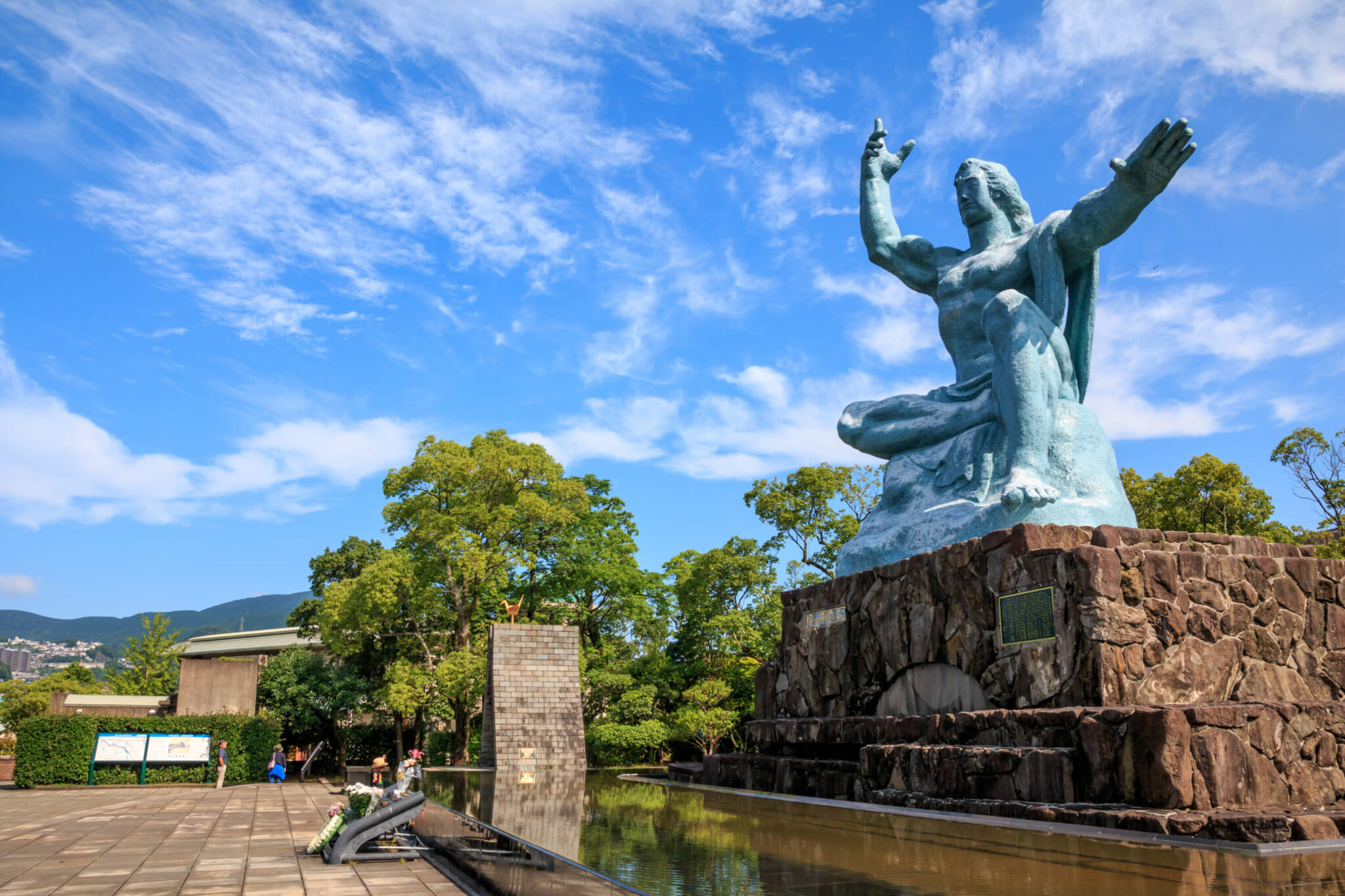
Peace Statue by TOMO via Shutterstock
21. Nagasaki
The capital of Nagasaki Prefecture, Nagasaki is a gorgeous little port city located on Kyushu Island known for its devastating past during World War II. Nagasaki is heavily influenced by the Netherlands as it opened to foreign trade in the 17th Century. It is no wonder that the city is filled with beautiful cathedrals and churches, as the Netherlands also brought religion to the city. Japan’s oldest Chinatown, called Shinchi Chinatown, is located in Nagasak
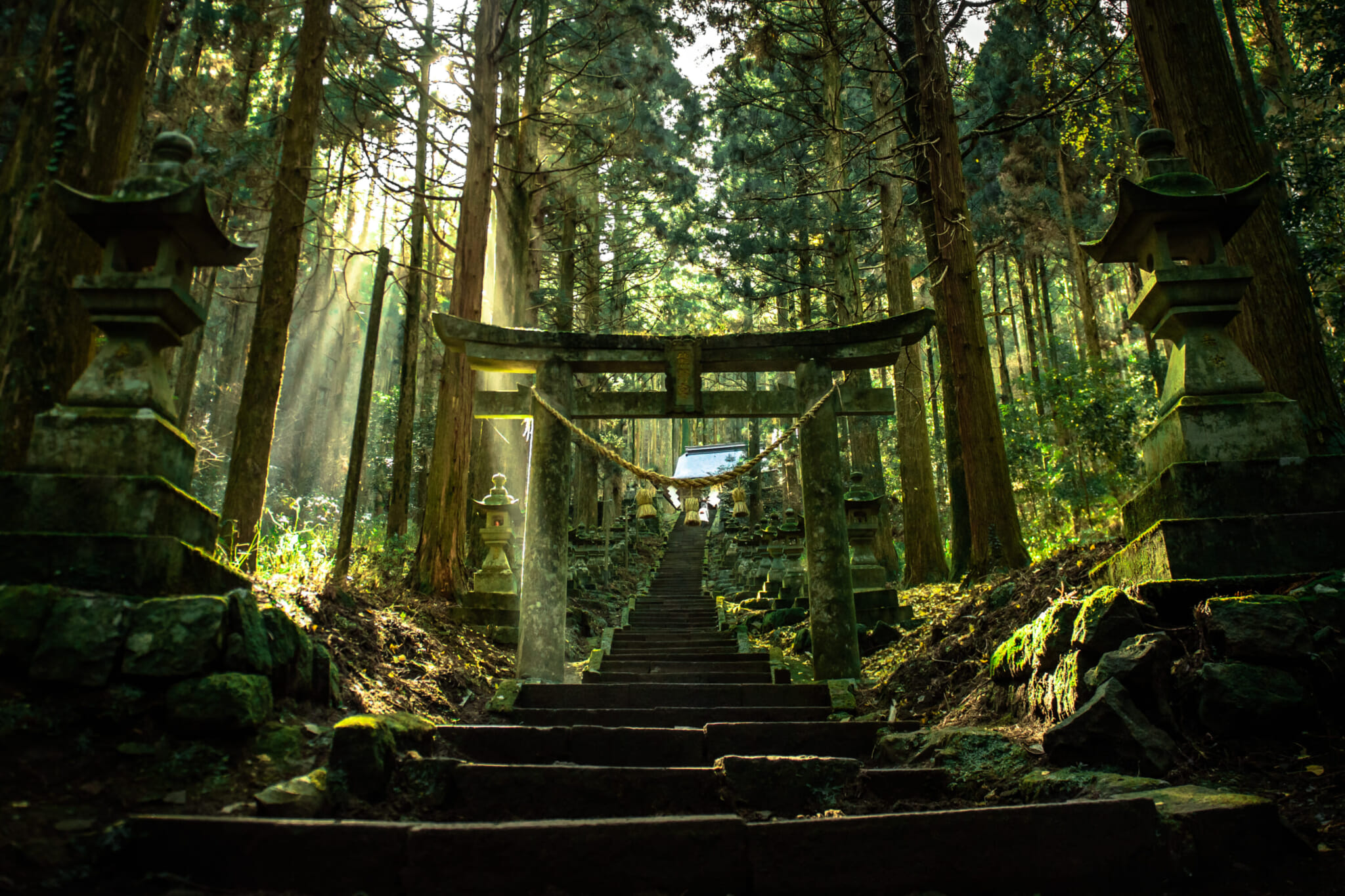
Kamishikimi Kumano Imasu Shrine by reason520ha via Shutterstock.
22. Kumamoto
The capital city of the prefecture, Kumamoto is known for its sleek castle. Due to its location near the active volcano, Mount Aso, Kumamoto is also nicknamed the “Land of Fire.” Take a stroll along the Suizenji Jojuen, a picturesque Japanese garden, designed as the map of an ancient road with 53 stations from Tokyo to Kyoto. It even has a miniature Mount Fuji. Check out one of Japan’s oldest hot springs, Yamaga Onsen Sakurayu. This onsen was built around 370 years ago for Tadatoshi Hosokawa, the lord of the Higo region, as a vacation home.
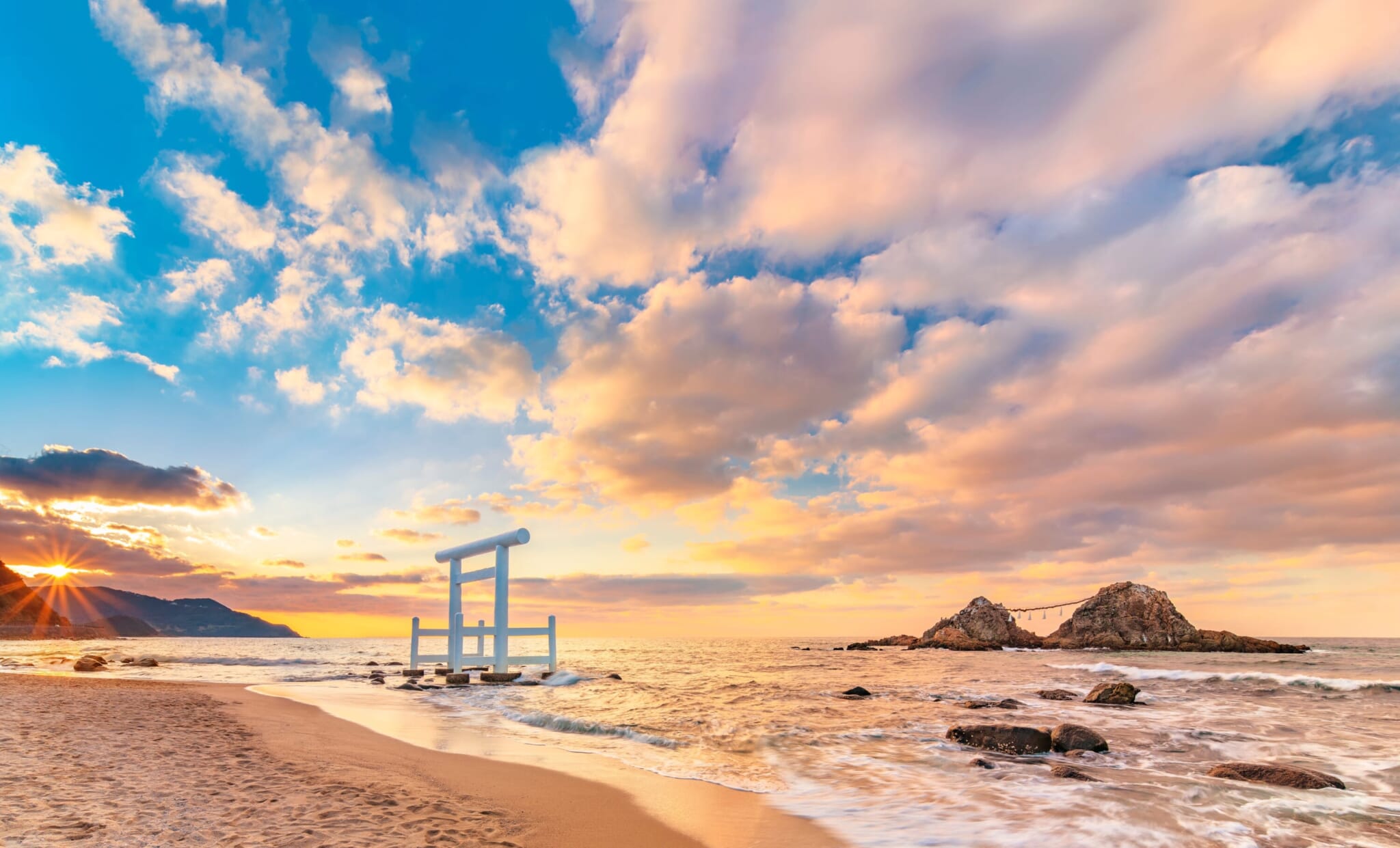
Itoshima beach by kuremo via Shutterstock
23. Fukuoka
Both modern and traditional, Fukuoka is an international city. It has a long cultural connection with China and Korea due to its close distance to the two countries. This port city was heavily influenced by the West due to foreign trade when Japan first opened itself to the world. Visitors should sample a bowl of Hakata ramen, which originates from the city. It also has various breathtaking naturescapes and historic sites, including Fukuoka Castle.
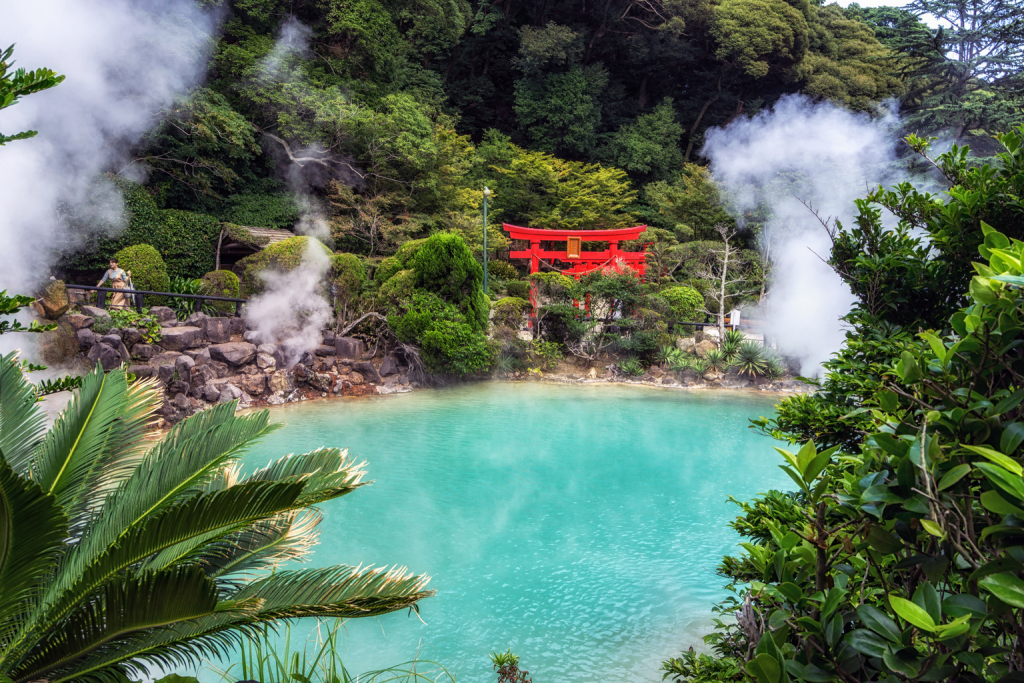
Beppu | Photo by aaron choi via Shutterstock
24. Beppu
Famously known for its hot springs, Beppu is a city of comfort and relaxation. Visitors have a wide array of onsen to choose from; from hot water baths, mud baths, sand baths, steam baths even foots baths, called ashiyu in Japanese. Jigoku Onsen, or the Hells of Beppu, showcases seven different natural hot springs. Head to Beppu’s theme park called Kijima Kogen Park, where the waiting time for rides are up until a maximum of 30 minutes. Make sure to taste some of the hot spring water-cooked delicacies at at restaurants or shops in the city.
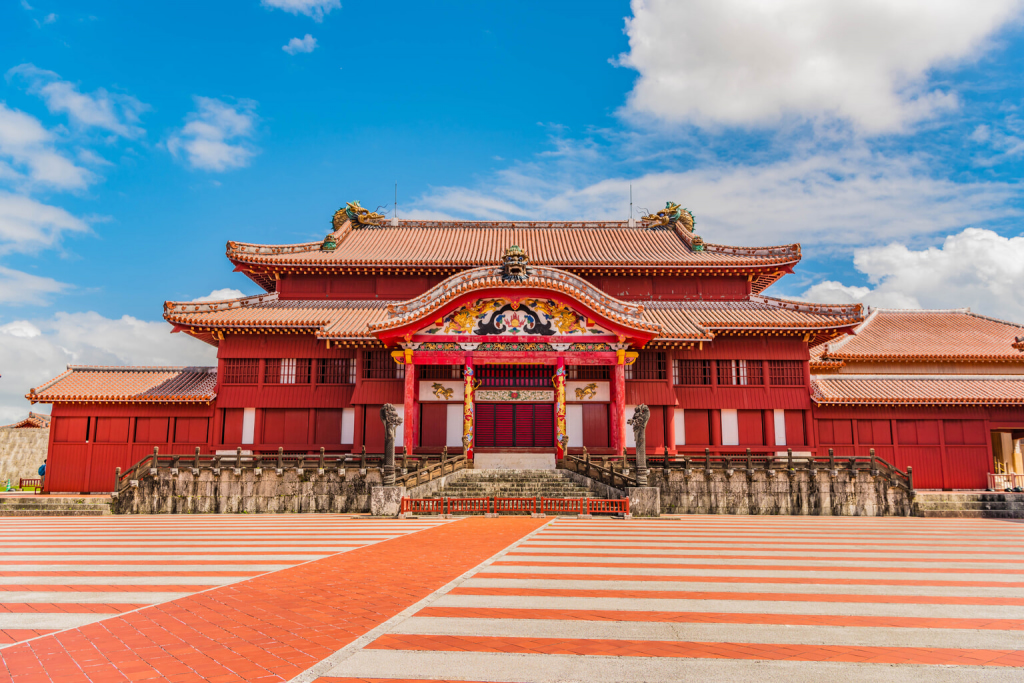
Shuri Castle in Naha | Photo by torasun via Shutterstock
25. Naha
Located on the southern coastline of the main island of Okinawa, Naha was the commercial and political center of the former Ryuku Kingdom and is the capital of the Okinawa Prefecture. From Naha, visitors can easily access various Okinawa islands and beaches as well as historical sites, including Shuri Castle and more. For shopping and dining, the best place to go is Kokusai Street.

